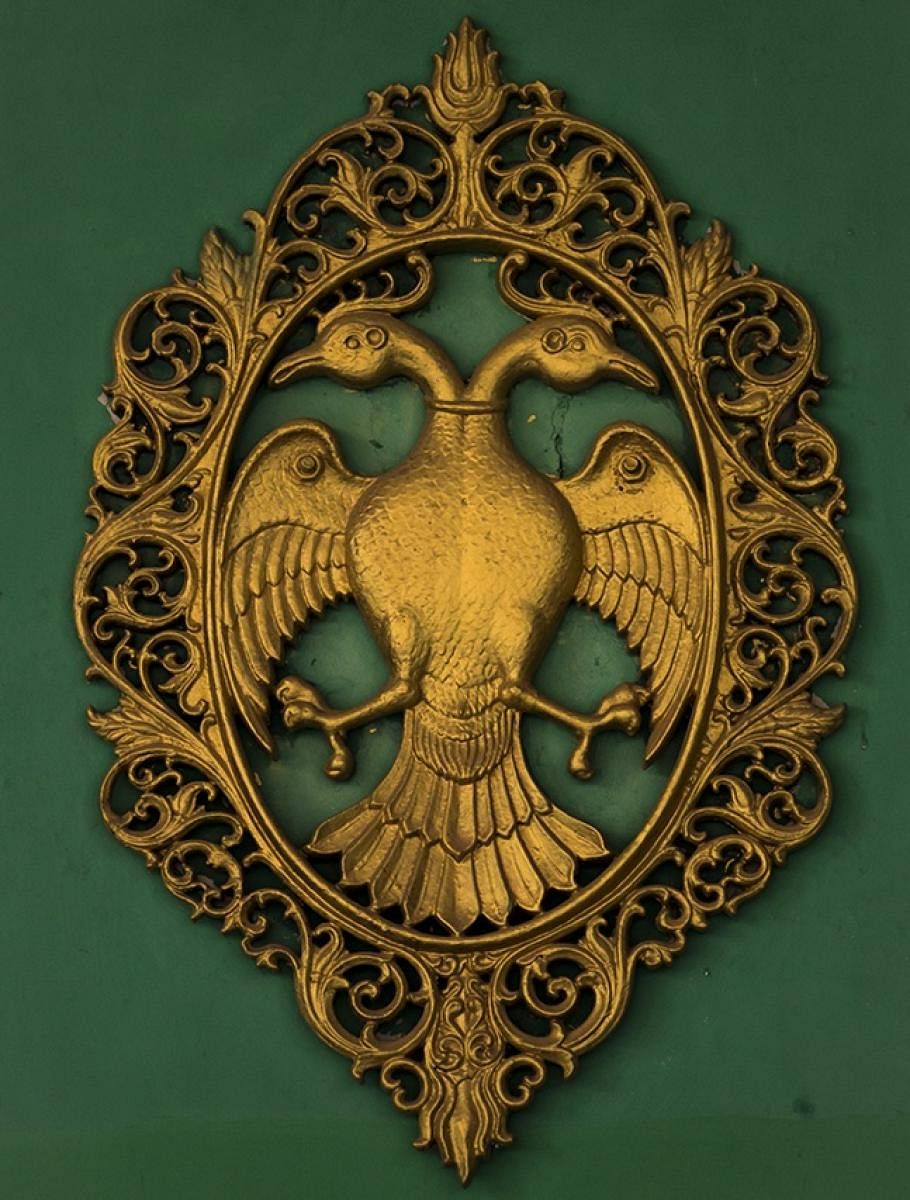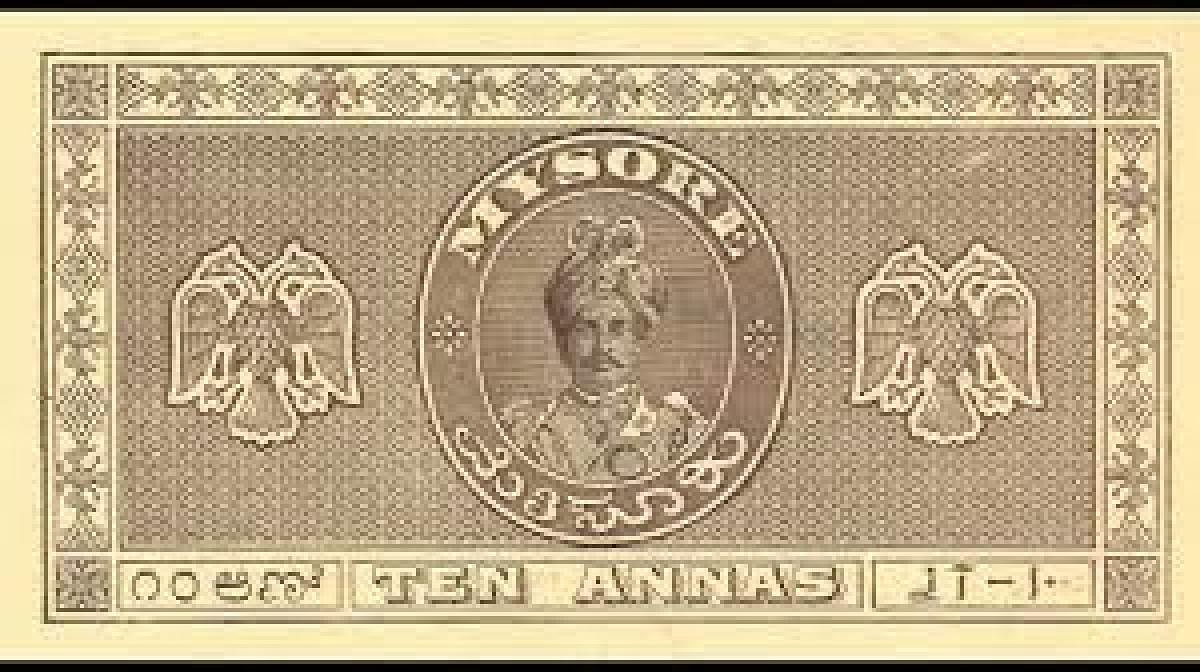

It finds mention in the Puranas and in certain inscriptions of Europe; one of its forms is worshipped as a deity; it sits at the heart of Karnataka’s emblem; it even adorns the logo of the current Bengaluru Football Club.
The time-travelling two-headed mythical creature, Gandaberunda, remains relevant in its omnipresence.
The state emblem is based on that of the erstwhile Kingdom of Mysore, which in turn was based on the Coat of Arms of the United Kingdom. The erstwhile royal family of Mysore had engravings of its insignia, of which Gandaberunda was prominent, or the Gandaberunda itself, on all that belonged to its government — like buildings, furniture, vehicles, organisations, uniform and ornaments.
The royal family continues the tradition of adorning the emblem on their possessions. Yaduveer Krishnadatta Chamaraja Wadiyar, the scion of the royal family, has his own emblem — YKC — embedded in the form of Gandaberunda. All heritage buildings and monuments in Mysuru, Bengaluru and other places of the erstwhile state,
including palaces, carry this symbol. It also remains as an adoptive symbol of the state machinery. The crest of Indian Navy ship INS Mysore features the bird, as do the tickets of the state-run buses.
In Europe
Historically, such a bird is found on a mural that dates back to 3600 BC in Persepolis, of the Hakkan civilisation, now in Iran. Another is found in an inscription at Boğazköy, now in Turkey, dating back to 1500 BC. A twin-headed bird, clutching two hares in its talons, is found in Hittite Temple in Turkey, dating back to the 14th-century BC.
Later, a similar bird is said to have been an emblem of the mighty Greek and Roman empires. At one point, all Christian kingdoms in Europe formed a union and adopted the symbol of a two-headed eagle for their fight against Islamic invaders.
Puranic connection
Gandaberunda, in India, traces its origin to the Puranas, where Lord Vishnu takes an incarnation. When Vishnu, as Narasimha, turns into a destroyer due to uncontrollable rage, following the execution of Hiranyakashipu, Shiva takes the form of Sharabha — part-lion and part-elephant — and tames Narasimha. Sharabha, enraged, becomes destruction personified prompting Vishnu to become Gandaberunda and tame Sharabha.
Historically, in Karnataka, the Chalukyas, Hoysalas, Keladi chiefs, Kadambas, Vijayanagara kings and Wadiyars have used Gandaberunda in various forms — like motifs in crests and on seals. The Hoysalas even adopted Gandaberunda as an epithet. Coins embossed with Gandaberunda were minted by the Chalukyas, Vijayanagara kings and Wadiyars.
The first sculpture of
Gandaberunda dates back to 1047 at Shiralakoppa, in Shivamogga district, under the Chalukyas. In the temple at Balligavi, Gandaberunda assumes an anthropomorphic form, having a gigantic human torso with two arms and legs, while retaining the twin avian heads. He is worshipped as Berundeshwara.
In Belur’s Chennakeshava Temple, a Gandaberunda sculpture can be seen slaying a Sharabha. In Trichy, a Gandaberunda is seen in Srirangam Temple, believed to mark the visit of Hoysala king Ballala II. Another Gandaberunda motif can be seen etched on the ceiling of Rameshwara Temple, in Keladi, Shivamogga district.
Chamarajendra Wadiyar X instituted ‘The Order of Gandaberunda’ in 1892 to honour the exemplary service and talent of artists, writers, and eminent citizens.